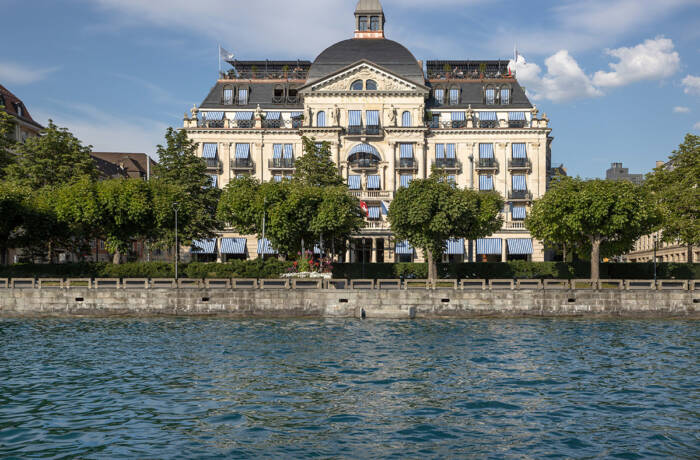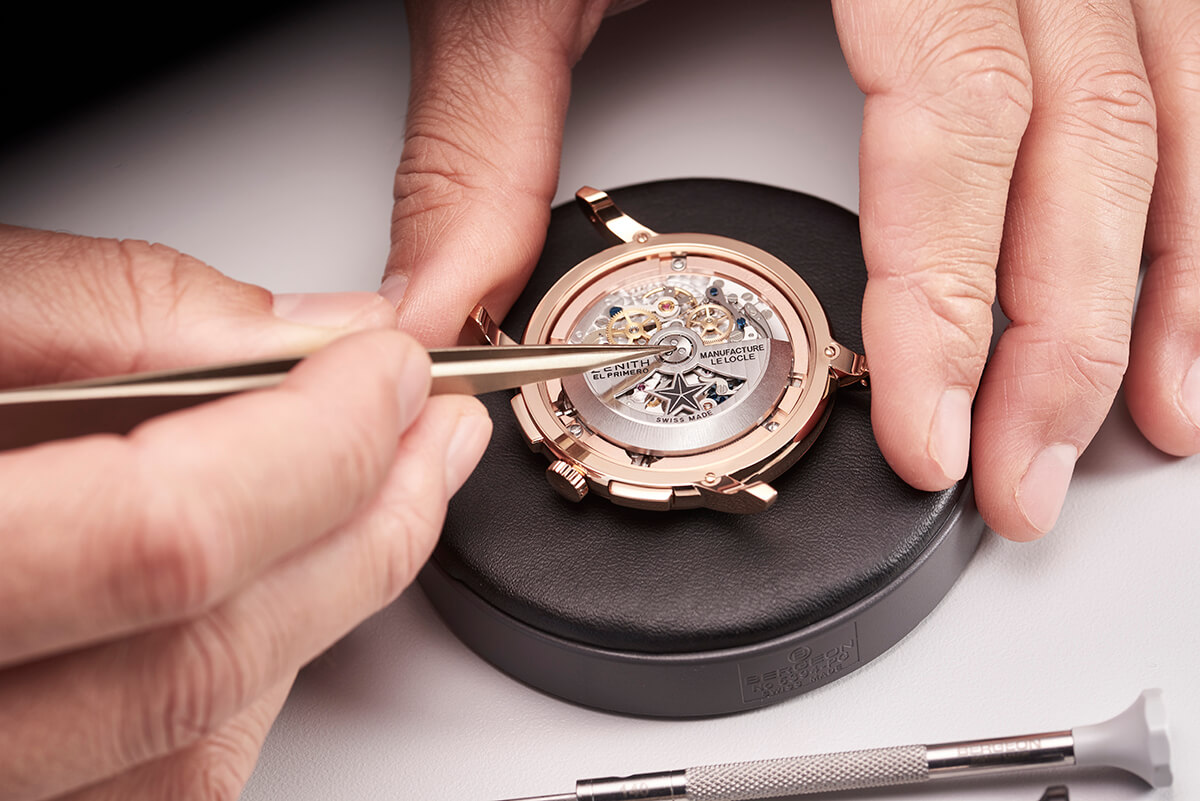
The Zenith El Primero Elite
With its revolutionary new mechanism, Zenith has challenged a 300-year-old watchmaking standard. Rachael Taylor meets the innovator behind the brand
In the Jura mountains, a high-altitude stretch of Switzerland deeply embedded in watchmaking heritage, Julien Tornare is operating a start-up. A 153-year-old start-up. Or at least that’s the way the Zenith chief executive views his leadership of this watch brand in flux.
The past couple of years have been stacked with innovation for Zenith. At global watch fair Baselworld in 2017, the maison delivered a reboot of the quite aptly named Defy collection that has shaken up not only its own offering, but the watchmaking status quo. The star of that first new wave was the Defy El Primero 21, a high-beat chronograph that can offer timing accuracy to 1/100th of a second, should you need to be absolutely sure which of your colleagues can complete the morning coffee run the swiftest.
Follow LUX on Instagram: the.official.lux.magazine
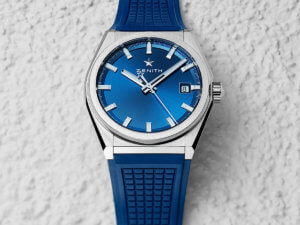
The Defy Classic with a blue alligator leather strap
Six months later came the really big news. Defy Lab, an experimental line of watches powered by silicone oscillators, not metal, had the watch community ready to self-combust. This was the first time that someone – Guy Sémon, a physicist and former French navy pilot, who is now the general director of Zenith’s sister brand TAG Heuer, to be exact – had successfully challenged the 300-year-old balance spring method developed by Dutch horologist Christiaan Huygens, the man responsible for the satisfying swing of an oscillating weight on your wrist.
What in traditional mechanical watchmaking once required 30 individual metal components, can now be done with just one silicon part. As well as reducing possible mechanical complications by having only one component to maintain, and making the watch lighter, this alternative silicon-driven mechanism also uses less power, and so increases the power reserve of the watch.

Zenith watches are still made in its atelier in Le Locle, Switzerland
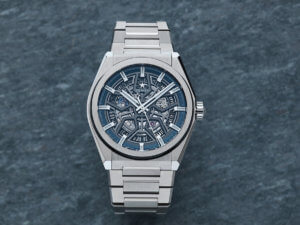
The Defy Classic
When the Defy Lab watches were launched, just 10 were made, and these experimental timepieces were very much sold as experiences. For an entry fee of CHF29,900, a small group of connoisseurs was inducted into the Defy Lab. Each was flown first class to Switzerland to collect their watch, and have dinner and a wine tasting session with Tornare and his boss Jean-Claude Biver, the charismatic president of Zenith parent company LVMH’s watch division. Between jovial sips and nibbles, the two pressed upon these early adopters that by supporting this launch, they are now part of watchmaking lore, and also that their watches might be less than flawless.
“There might be some corrections,” admits Tornare. “I told them, you’re buying the research so your watches may not be perfect. They understand that they are part of the turning point, not only for Zenith but for the whole [watchmaking] industry.” Rather than be put off, this collusive, pioneering spirit has the collectors rapt – and connected. “On their own initiative, they have created their own WhatsApp group,” says Tonare.
Read more: Why you need to see the Rodin “Draw, Cut” exhibition at Musée Rodin, Paris
While the Defy Lab launched to much fanfare – with watches delivered by drone to a packed-out preview as Biver shouted, “We are the future of watchmaking!” – the use of silicone has had its detractors, who are worried that this game-changing engineering could destroy traditional horology. “Every time we change something you have two different reactions,” muses Tornare. “Purists are often against change, but when you get to the wider population of clients and millennials, that’s what they want. They want to buy something that brings something new and creative. We have to work between these worlds.”
Though he refers to the purists as friends, it is the more adventurous crowd that Tornare is really pursuing with the new direction in which he has been pushing Zenith since his arrival at the brand 18 months ago. “I worked a lot with Mr Biver [when I first joined], we exchanged a lot on the DNA of the brand,” he says. “In 153 years of history, there has always been a very strong spirit of innovation. Now the big question is, how do we keep millennials interested in mechanical watches? If we don’t want to become a museum brand, we have to keep bringing new things.”
When speaking of Zenith’s innovation, Tornare refers to the El Primero, which, when it launched in the 1960s was the first Swiss-made, fully integrated automatic chronograph, making it revolutionary at the time. And the line remains one of the most respected automatic chronographs in its price range today. Yet, like the rest of the Swiss watch industry, Zenith got complacent in the boom times. “The whole industry became a little bit static, especially in the past 12 to 15 years when all the brands did so well with the first generation of Chinese [wealthy consumers] buying anything at any price. Maybe the industry became a little bit lazy. Global brands tended to look to the past, including Zenith. It’s very important to wake up. We need to build from our heritage, but also create for the future.”

The Zenith building’s facade bears the initials of founder Georges Favre-Jacot
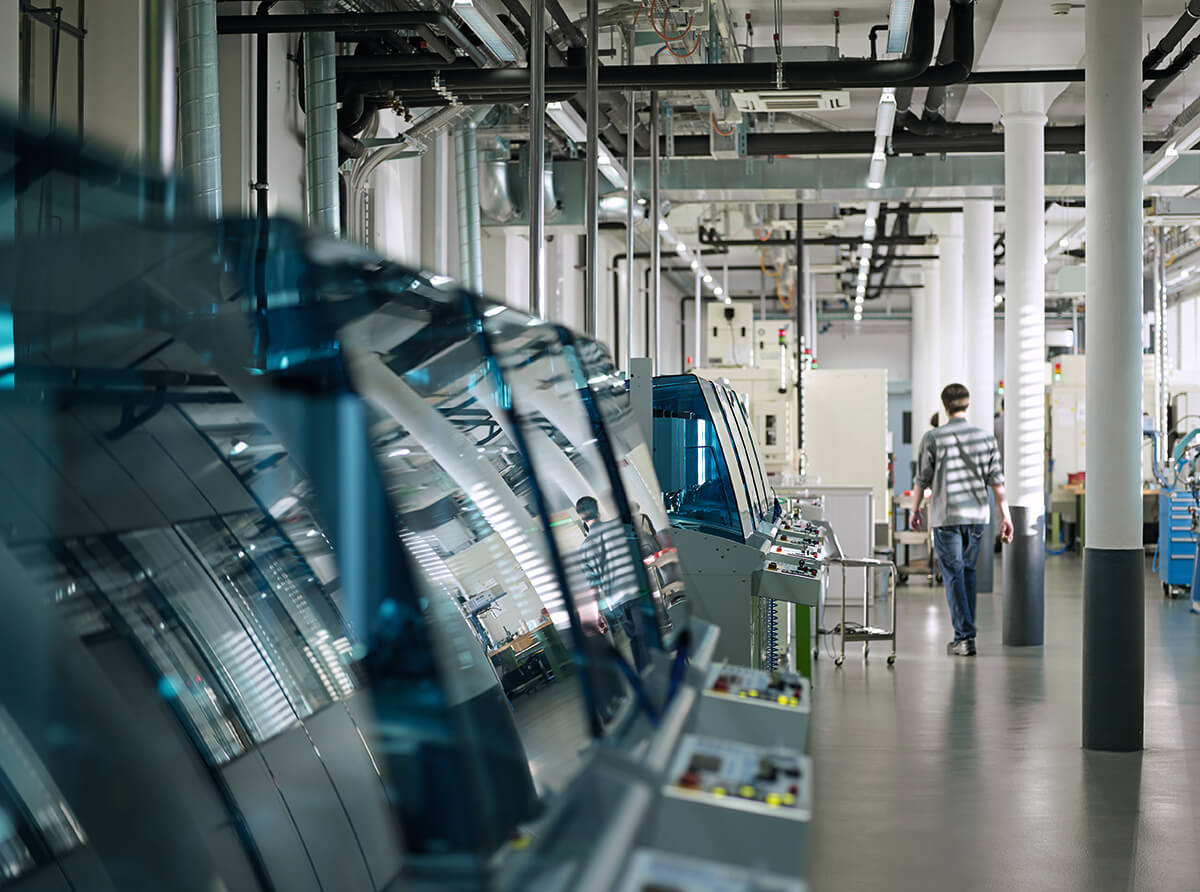
Zenith’s manufacturing facility was renovated in 2012
Tornare is applying this methodology not only to the products that Zenith produces, but to the entire company ethos. And with freshly installed ping-pong tables and cosy weekly breakfast chats with the entire team, he is consciously creating a start-up culture within a heritage luxury business. The concept is so alien that the highly respected IMD business school in Lausanne, at which Tornare himself studied, is currently working on a case study about Zenith and the challenges of being a retrospective start-up.

The Defy Classic with a titanium bracelet
Yet, for Tornare, who has spent much of his 25-year career in watches outside of his Swiss homeland, taking jobs in Hong Kong and the US, it makes perfect sense. “We have to think differently,” he says. “Swiss watch companies, and those located in the mountains, such as Zenith, are turned to the past. When I came on board, I started talking about a start-up spirit. I want to be innovative and dynamic.”
Read more: We ask Corum’s CEO Jérôme Biard 6 Questions
With a large staff deeply ingrained in Swiss watch culture, spread over 18 buildings, it was a hard sell at first. “The first [breakfast] sessions were difficult as it was a bit of a one-way speech and people were not interacting, but by the fourth session they got the exercise and one watchmaker stood up and asked, ‘Why don’t we have big celebrities like other brands?’,” says Tornare, who deftly responded that the lack of star power comes down to budgetary issues. “For me, though, it’s not about ideas to implement, it’s about the exchange and to make them feel part of the adventure.”
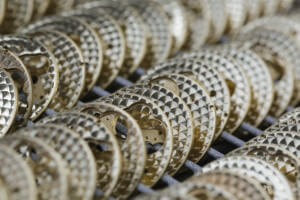
Stacked watch plates during manufacturing
The next step in that adventure is to commercialise the Defy Lab watches. “From the very beginning, we didn’t want to have 10 prototypes and then stop there,” says Tornare. “I still remember as a kid at the Geneva car show, you could see so many great cars looking like space ships, but they would never get on the market.” This isn’t what he wants for his brand.
Moving Defy Lab beyond science experiment status to full-blown innovator requires scale, and Tornare is “95 percent sure” that just after Baselworld 2019 at the end of March next year, Zenith should release a more commercial offering of these watches. Production levels will depend on keeping to a strict testing schedule, but Tornare is hopeful of producing between 400 and 600 watches, which he expects to be offered at a more accessible sub-€15,000 price tag.
The margin of error is so high for the silicone oscillators, that should the shape be out by a micron (the silicone is cut by laser and hand corrected), it will not keep time accurately, and as such, each watch needs to be individually tested. Tornare should know more at the end of the summer, when his team return from their holidays and bring back the Defy Lab watches they have been testing in different environments. Not quite the strict lab conditions we expect from Switzerland, but this crowd-funded research most definitely fits in with the all-new modern attitude of this evolving watchmaking legend.
View Zenith’s collections: zenith-watches.com


